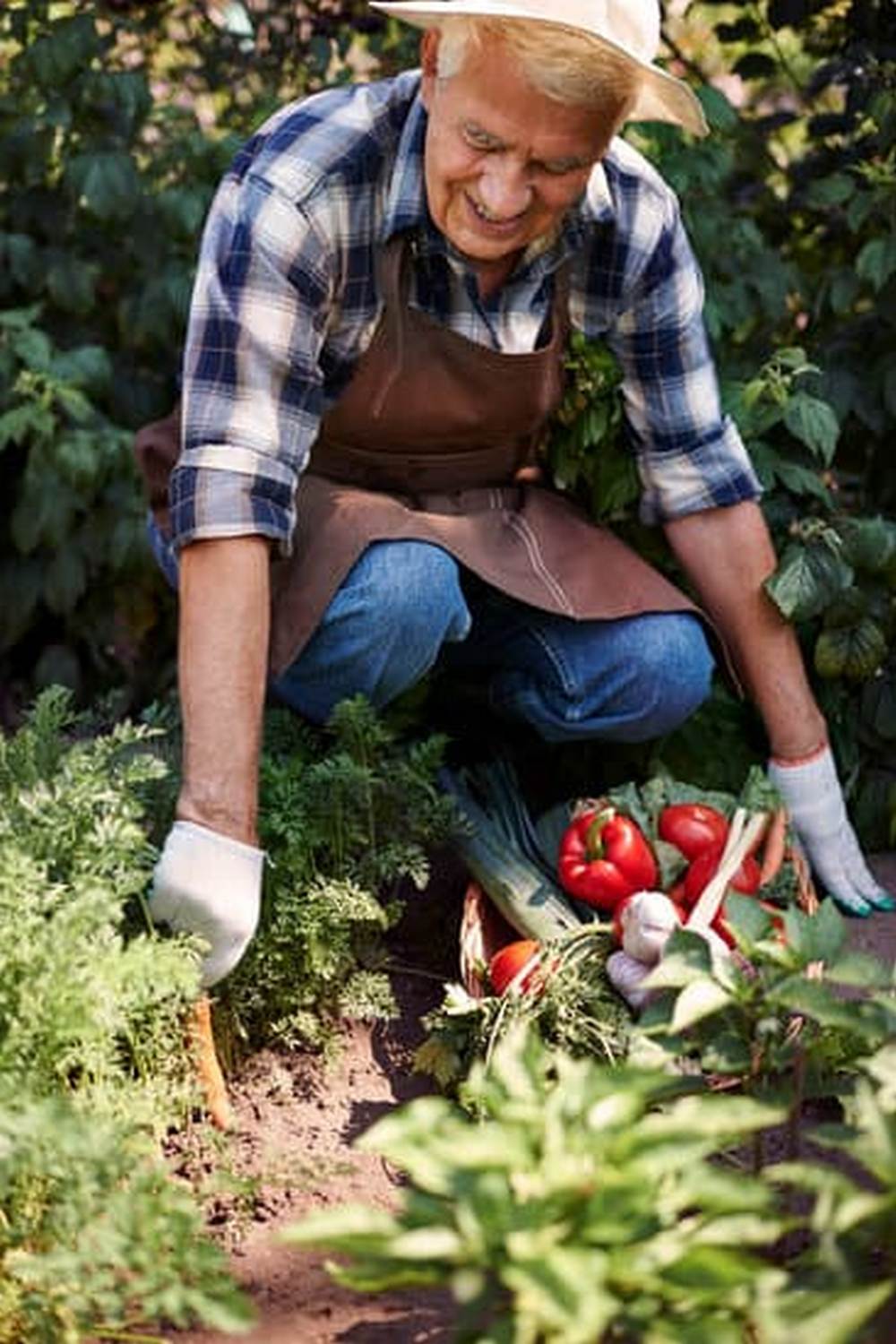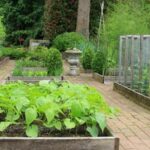Are you looking to bring the joy of gardening into your home? Indoor vegetable gardens are a wonderful way to add fresh produce to your diet while enjoying the satisfaction of growing your own food.
The convenience of having your own indoor vegetable garden allows you to have access to fresh herbs, fruits, and vegetables right at your fingertips. Whether you have limited outdoor space or simply want to enjoy gardening year-round, an indoor vegetable garden is the perfect solution.
Not only does an indoor vegetable garden provide you with healthy and organic produce, but it also adds a touch of greenery and freshness to your living space. By growing your own vegetables indoors, you can reduce your carbon footprint by decreasing the need for transportation and packaging associated with store-bought produce. Additionally, indoor gardening can be a therapeutic and rewarding hobby that offers relaxation and stress relief.
In this comprehensive guide, we will explore the benefits of having an indoor vegetable garden, including tips on choosing the right location in your home, selecting the best containers for your plants, finding the ideal soil and fertilizer options for success, as well as providing step-by-step instructions on seed selection and planting.
Join us on this journey to discover the joys of indoor vegetable gardening and how it can transform not only your diet but also your overall well-being.
Choosing the Right Location
It is also important to consider the temperature and airflow in the chosen location. Most vegetables prefer temperatures between 65-75°F (18-24°C), so avoid placing your indoor garden near drafty windows or heating vents. Adequate air circulation is essential to prevent mold and disease from affecting your plants, so choose a spot with good ventilation.
If space is limited in your home, vertical gardening can be a great solution for growing a variety of vegetables indoors. Utilizing vertical planters or hanging containers can maximize the available space and allow you to grow a bountiful indoor vegetable garden even in small apartments or condos. With proper planning and consideration of these factors, you can create an optimal environment for your indoor vegetable garden to flourish.
| Location Considerations | Recommendations |
|---|---|
| Sunlight Exposure | 6-8 hours of sunlight per day |
| Temperature | 65-75°F (18-24°C) |
| Air Circulation | Avoid drafty areas, ensure good ventilation |
Container Selection
When setting up an indoor vegetable garden, choosing the right containers is essential for the success of your plants. There are various options available, each with its own advantages and considerations to keep in mind. Here are some of the different types of containers that you can use for your indoor vegetable garden:
Traditional Pots
Traditional terracotta or plastic pots are popular choices for indoor gardening. They come in a variety of sizes and shapes, allowing you to customize based on the space and type of vegetables you want to grow. These pots have good drainage holes at the bottom to prevent waterlogging.
Grow Bags
Grow bags are fabric pots that provide good aeration and drainage for plant roots. They are lightweight, making them easy to move around if needed. Grow bags come in various sizes and can be reused season after season.
Hydroponic Systems
Hydroponic systems are another option for indoor vegetable gardens, especially for those looking for a more high-tech approach. These systems allow plants to grow without soil, using nutrient-rich water instead. While they require an initial investment, hydroponic systems can produce higher yields in a smaller space.
The key is to choose containers that suit your space, gardening goals, and personal preference when setting up your indoor vegetable garden. Remember that proper drainage is crucial to prevent overwatering and root rot in your plants. Experiment with different container types to find what works best for you and enjoy watching your indoor vegetable garden thrive.
Soil and Fertilizer
When it comes to cultivating a successful indoor vegetable garden, choosing the right soil and fertilizer is crucial for the health and growth of your plants. Unlike outdoor gardening, indoor environments require a more controlled approach to providing nutrients for your vegetables. One popular option is to use a high-quality potting mix that is specifically formulated for container plants. This type of soil provides excellent drainage while retaining the necessary moisture for plant roots.
In addition to selecting the appropriate soil, the choice of fertilizer also plays a significant role in the success of your indoor vegetable garden. Organic fertilizers are often preferred by many indoor gardeners as they provide essential nutrients without the risk of chemical build-up in the soil. Compost tea, fish emulsion, or seaweed-based fertilizers are excellent organic choices that can help promote healthy growth in your vegetable plants while maintaining a balanced ecosystem in your indoor garden.
It is important to monitor the nutrient levels in your soil regularly to ensure that your plants are receiving adequate nourishment. Testing kits can be used to determine any deficiencies or excesses in key nutrients like nitrogen, phosphorus, and potassium.
Adjusting your fertilizer regimen based on these results will help maintain optimal growing conditions for your indoor vegetable garden. Remember, a well-balanced combination of quality soil and organic fertilizers can lead to bountiful harvests from your indoor vegetation throughout the year.
| Beneficial Elements | Organic Sources |
|---|---|
| Nitrogen | Compost tea |
| Phosphorus | Fish emulsion |
| Potassium | Seaweed-based fertilizers |
Seed Selection and Planting
When starting an indoor vegetable garden, one of the essential steps is selecting the right seeds and planting them correctly. Choosing the right seeds will determine the success of your indoor garden, so it’s crucial to pick high-quality seeds that are suitable for indoor growing.
Look for seeds specifically labeled for indoor cultivation or compact varieties that thrive in containers. Some popular vegetables that grow well indoors include cherry tomatoes, peppers, lettuce, herbs like basil and parsley, and microgreens.
Seed Selection
When selecting seeds for your indoor vegetable garden, consider the space you have available and your preferences when it comes to vegetables. Some plants like tomatoes and peppers require more space to grow and may need trellising or support systems. Others like leafy greens can be planted closer together since you’ll harvest them regularly as they mature. Additionally, pay attention to the lighting requirements of each plant species to ensure they receive adequate sunlight indoors.
Planting Guide
After choosing the seeds for your indoor vegetable garden, it’s time to plant them in suitable containers. Make sure to select containers that have good drainage to prevent waterlogging, which can lead to root rot. Start by filling the container with a high-quality potting mix formulated for vegetables.
Follow the planting instructions on the seed packet regarding depth and spacing between seeds. Water the soil lightly after planting and place the containers in a sunny spot where your plants will receive at least 6-8 hours of sunlight daily.
Caring for Seedlings
Once you’ve planted your seeds, keep a close eye on them as they germinate and grow into seedlings. Water your plants regularly but avoid overwatering, as this can cause issues like mold or fungus growth. As your seedlings grow, consider supplementing with a balanced liquid fertilizer to provide essential nutrients for healthy growth.
Monitor their progress closely and make adjustments as needed based on their specific care requirements. Eventually, you’ll see your indoor vegetable garden flourish with fresh produce ready for harvest.
Maintenance Tips
Having an indoor vegetable garden comes with many benefits, including having fresh produce at your fingertips all year round. To ensure the success of your indoor vegetable garden, proper maintenance is key. Here are some valuable tips on watering, pruning, and pest control to help you keep your indoor plants healthy and thriving:
- Watering: Proper watering is crucial for the health of your indoor vegetable plants. Make sure to water them regularly, but be mindful not to overwater as it can lead to root rot. Check the soil moisture level before watering by sticking your finger into the soil – if it feels dry, it’s time to water.
- Pruning: Regular pruning can help promote healthy growth and prevent overcrowding in your indoor vegetable garden. Trim off any yellowing or dead leaves to redirect the plant’s energy towards producing new growth. Additionally, prune back any leggy stems to encourage a bushier plant.
- Pest Control: One of the challenges of indoor gardening is dealing with pests that can damage your plants. Keep an eye out for common indoor plant pests like aphids, spider mites, and whiteflies. To control these pesky intruders, you can use natural remedies like neem oil or insecticidal soap.
By following these maintenance tips for your indoor vegetable garden, you can enjoy a bountiful harvest of fresh and delicious produce throughout the year. Remember that with proper care and attention, your indoor plants will thrive and provide you with a sense of satisfaction knowing that you grew them yourself.
Harvesting Your Vegetables
Harvesting your indoor vegetable crops is one of the most rewarding aspects of having an indoor vegetable garden. Not only do you get to enjoy the fruits of your labor, but you also get to taste the fresh, flavorful produce that you have grown yourself. Here are some tips on knowing when and how to harvest your indoor vegetables for the best results:
- Observe the plant: Keep a close eye on your indoor vegetable plants as they grow. Look for visual cues such as the color, size, and texture of the vegetables to determine if they are ready for harvest.
- Check maturity: Different vegetables have different maturity indicators. Some may be ready for harvest when they reach a certain size, while others may change color or firmness. Refer to seed packets or online resources for specific information on each type of vegetable.
- Use the taste test: One foolproof way to know if a vegetable is ready for harvest is by tasting it. Pick a small sample and taste it to see if it has reached the desired flavor and sweetness.
Knowing when to harvest your indoor vegetables at the right time is crucial for ensuring optimal flavor and nutritional value. Additionally, proper harvesting techniques can help promote plant growth and encourage continuous production throughout the growing season.
Remember that harvesting your indoor vegetable crops should be done with care to avoid damaging the plants. Use clean, sharp scissors or pruning shears to cut the vegetables from the plant without causing unnecessary stress or harm. By following these tips, you can enjoy a bountiful harvest from your indoor vegetable garden all year round.
Recipes and Meal Ideas
Growing your own indoor vegetable garden not only provides you with fresh and healthy produce but also opens up a world of culinary possibilities. The satisfaction of harvesting your own vegetables and incorporating them into delicious meals is truly rewarding. From salads to stir-fries, soups to smoothies, the options are endless when it comes to creating dishes with the bountiful harvest from your indoor garden.
One simple yet tasty recipe idea using vegetables from your indoor garden is a vibrant summer salad. Combine freshly picked cherry tomatoes, crisp cucumbers, and crunchy bell peppers with some leafy greens like lettuce or spinach. Drizzle with a homemade vinaigrette dressing made from olive oil, vinegar, mustard, and seasonings for a refreshing and nutritious meal. The colors and flavors of the homegrown vegetables will surely elevate the taste of this dish.
Another creative way to use the produce from your indoor vegetable garden is by making veggie-packed pasta primavera. Sautee an assortment of vegetables such as zucchini, carrots, and mushrooms in olive oil until tender. Season with herbs like basil and oregano, then toss with cooked pasta and a sprinkle of Parmesan cheese for a wholesome and satisfying meal.
The freshness of the ingredients will enhance the overall flavor of this classic pasta dish, making it a delightful option for lunch or dinner. With these recipes and meal ideas, you can enjoy the fruits of your labor by creating nutritious and delicious dishes right from your own indoor vegetable garden.
Conclusion
In conclusion, the benefits and joys of having an indoor vegetable garden are truly endless. Not only does it provide you with a fresh and convenient source of produce right at your fingertips, but it also adds a touch of greenery and life to your home. The satisfaction of nurturing plants from seed to harvest and enjoying the fruits of your labor is incomparable.
For those looking to start their own indoor vegetable gardens, the key lies in selecting the right location, containers, soil, fertilizer, seeds, and maintaining proper care for your plants. With a little bit of knowledge and dedication, anyone can successfully grow their own vegetables indoors. Whether you have limited outdoor space or simply want the convenience of having fresh greens year-round, indoor vegetable gardens are a perfect solution.
So why wait? Start your indoor vegetable garden today and experience the joy of growing your own food right in the comfort of your home. With a variety of vegetables to choose from and numerous recipes to explore using your harvest, the possibilities are endless. Take the first step towards sustainable living and enjoy the rewards that come with tending to an indoor vegetable garden. Happy gardening.
Frequently Asked Questions
Can You Make an Indoor Vegetable Garden?
Yes, you can definitely make an indoor vegetable garden! All you need is a sunny spot, some containers or pots, good quality soil, seeds or seedlings, and regular watering. Indoor gardening can be a great way to grow fresh vegetables regardless of the season.
What Is the Best Temperature for Growing Vegetables Indoors?
The best temperature for growing vegetables indoors typically ranges between 65°F to 75°F during the day and slightly cooler at night. Most vegetables thrive in these moderate temperatures which mimic their ideal outdoor growing conditions. It’s important to ensure that your indoor space provides adequate warmth and sunlight for optimal growth.
Can I Grow Vegetables Indoors in the Winter?
Growing vegetables indoors in the winter is not only possible but can also be quite rewarding. With some extra care, attention to light exposure, and maintaining the right temperature, you can successfully cultivate a variety of vegetables throughout the colder months. Winter gardening can provide you with fresh produce even when outdoor conditions are not conducive for growth.

If you’re looking to get into vegetable gardening, or are just looking for some tips on how to make your current garden better, then you’ve come to the right place! My name is Ethel and I have been gardening for years. In this blog, I’m going to share with you some of my best tips on how to create a successful vegetable garden.





